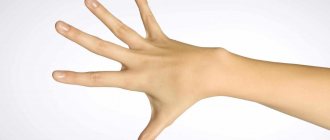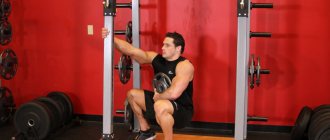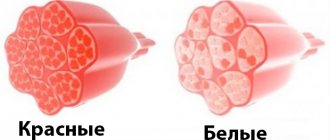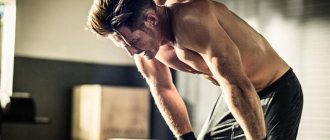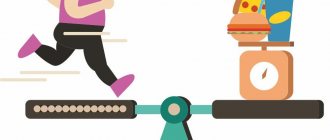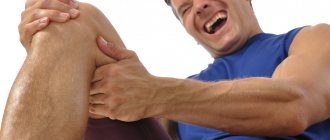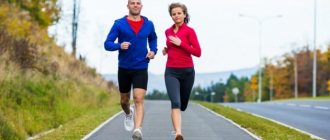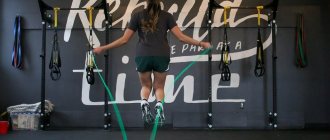Frequent post-workout cramps
Who among us is not familiar with the pain and cramps associated with stress and tension in the muscles.
The reason for this may be physical unpreparedness or unusual work affecting underdeveloped muscle groups. But more often, convulsive syndrome occurs in sports fans and professionals, those who actively push themselves to the maximum in training. If we talk about the frequency of muscle spasms, they can be distributed in two directions: muscle groups and categories of trainees.
Muscles
Sudden contractions of an involuntary nature, most often affecting muscles (in increasing order):
- passing along the chest;
- stop;
- faces;
- arms (hands, forearms, fingers);
- neck;
- hips:
- quadriceps (front surface);
- semimembranosus, biceps, semitendinosus (posterior surface);
- abdomen (straight, oblique)
- toes;
- calf.
Exercising
The likelihood of developing painful convulsive symptoms is high in the following groups of patients:
- those who are actively involved in sports;
- elderly age category (due to age-related decrease in muscle mass);
- young children (due to underdeveloped weak control over their muscles);
- women during pregnancy (due to hormonal changes or weight gain).
How to treat and provide first aid for seizures
When finding out the cause of this condition, you should know how to properly help a person in such a situation, what to do to stop the attack and how to get rid of such an attack yourself. First you need to calm down, calm down the fear and growing panic. Raise your torso slightly. Sit on the bed, lower your limbs to the floor. Thanks to the effects of cold, blood microcirculation will improve. Next, you need to slowly and carefully rise to your feet.
The body position is straight, legs should be together. After a few seconds, the unpleasant symptoms should disappear. The blood flow will improve and the attack will pass.
Treatment or relief of an attack also consists of the following manipulations - the leg must be pinched, pricked with a needle or pin (this is why people who are professional swimmers have a habit of carrying an inconspicuous small pin with them - in a particular situation it can even save their life ). In order to help blood flow improve, you should carefully massage the limb, pat the surface of the skin in the area that was affected by the convulsion. After restoring blood flow, it is recommended to perform a self-massage procedure, rest well, and try to sleep.
After stopping the attack, it is recommended to find out its cause. If necessary, undergo appropriate treatment. In the future, to prevent repeated attacks, you should adhere to simple rules: give your legs a moderate load, this will strengthen the ligaments and muscles, it is important to control your body weight. It is also important to wear comfortable shoes that will not put pressure on your feet. It is recommended to do light jogging at least three times a week. It is also important to adjust your diet to saturate the body with the missing substances.
Source: infecun.ru
Causes of the phenomenon
The prerequisites for muscle cramps and spasmodic pain can arise from the outside or from the inside. Depend on external influences or internal painful conditions (sometimes diseases).
External
- Heat. In a hot, dry climate, a person sweats profusely, which upsets the balance of microelements that are excreted through sweat;
- overload, overstrain, muscle injuries (under critical loads micro-tears of fibers occur, reducing their performance)
- sprains;
- hypothermia;
- excess salt in the diet;
- alcohol/smoking;
- side effect from taking medications;
- excess weight;
- dehydration.
Pathological
- lack of vitamins/microelements;
- impaired blood circulation;
- chronic fatigue syndrome;
- diseases of the spine;
- atherosclerosis;
- varicose veins;
- diseases of the nervous system;
- diabetes;
- stress;
- pathologies of the thyroid gland;
- metabolic disorders.
Overwork
Pain is a message about violations, overloads or damage. The same is true for cramps, this is microtrauma or overexertion after intense sports. Therefore, when a person just starts training, he needs to go through an adaptation period so that the muscles can get used to the loads and prepare for increased activity.
People who regularly exercise and are forced to stop exercising recover much faster. Their muscles are noticeably more resilient and stronger because they have good neuromuscular control, which helps avoid fatigue.
In an untrained person, the muscles quickly tire, become clogged with lactic acid, and sharply weaken. A subsequent attempt at a sharp contraction leads to a spasm due to overwork.
Water-salt imbalance
We owe dehydration and a lack of electrolytes to increased sweating or neglect of drinking regime. In any of these situations, sodium, magnesium, calcium and potassium salts are lost - elements necessary for muscle contractions.
If the water-salt balance is disturbed, human organs are not fully provided with vitamins, minerals and fluids, then metabolic processes are disrupted and all body systems begin to malfunction. One of the consequences is cramps and spasms. Which more often arise against the background of stress during training.
Express methods for relieving the condition
It happens that after training the muscles hurt so much that it is impossible to bear. It is useful to know several express methods that will instantly eliminate painful sensations:
- 1. Water is the first aid for tired muscles. You can use both cold water and a contrast shower. Just 10 minutes of cold water treatments or 20 minutes of a warm bath with sea salt is enough to feel relief.
- 2. A combination of high and low temperatures with plenty of fluids quickly relieves pain.
- 3. Swimming for 20 minutes is great for helping muscles. Quite often, athletes who suffer from regular sore throat become fans of swimming. This type of exercise allows you to improve blood circulation and dilate blood vessels, due to which muscle pain recedes.
- 4. Massage can not only relax muscles, but also relieve pain. If there is no specialist nearby, you can do it yourself. The main thing is to warm up the muscles and knead painful areas to improve blood flow. For massage, you can use various oils, for example, olive oil with the addition of a few drops of essential oil. Special massagers and rollers will help make the task easier.
- 5. Creams containing anti-inflammatory components and other active substances are suitable for the laziest. Just rub the product into painful areas before going to bed.
- 6. After a grueling workout, warming up effectively relieves pain. Yes, this is difficult, since there is almost no strength left, but this allows you to quickly eliminate the problem. In addition, stretching before and after training reduces the risk of injury by 50%, since the muscles will already be warmed up and ready for greater stress.
To begin with, it is important to know that soreness is not dangerous; it indicates that the muscles are adapting to the new load. And to get rid of pain, you should start with
Proper nutrition
After intense training, muscles need protein and carbohydrates: protein produces amino acids that are necessary for healing, and carbohydrates provide glycogen. You can get protein by eating chicken, fish, soy, turkey, and egg whites—the most concentrated sources of protein.
Drink plenty of fluids
Support . Drinking plenty of fluids is necessary, you should drink at least two liters per day. Dehydration leads to muscle fatigue. In addition, water helps remove toxins from the body.
Recovery training
Doing light aerobic exercise. This helps relieve painful muscle stiffness and increases blood flow, which in turn provides oxygen and nutrients to the muscles.
Relaxing massage
An effective way to relieve pain is a relaxing massage. It also promotes better blood circulation in the muscles, relieves stiffness and muscle tension.
Rest from intense training
It is necessary to give the body time to recover. It is enough just to avoid intense physical activity, and after a few days the pain will go away on its own, without special treatment.
Compress
A cold compress will help relieve pain and discomfort. This compress will be most effective on the first day after exercise. The compress should be applied for 15-20 minutes every 5-6 hours.
A warm compress dilates blood vessels and brings relief. A bath, shower, heating pads, and warming cream will be effective. You can warm the muscles for 20-30 minutes 1-3 times a day.
Alternation of heat and cold
In this case, the cold will reduce inflammation, and the heat will increase blood circulation. You can alternately apply an ice pack (for 10 minutes) and a heating pad (for 20 minutes). A contrast shower is also effective: alternating 40-60 seconds of cold water and 1-2 minutes of warm water.
Medications
It is often advised to take aspirin or ibuprofen in case of muscle pain. However, taking these medications will only temporarily reduce pain and will not speed up healing. And if taken frequently, it can slow down recovery.
It is always easier to prevent discomfort and pain than to treat them. Krepatura usually occurs after such a load to which the muscles are not yet accustomed and are not ready. This leads to the main method of prevention - gradually increasing the load so that the muscles can adapt to new exercises. Warm-up is also very important. It will not only reduce the risk of injury, but will also increase blood flow to the working muscles.
Text: Tatyana Maratova
Muscle pain after training is a common occurrence, and you shouldn’t be afraid of it. However, you shouldn’t think that this is a sign of health either. Muscle pain after training usually indicates overexertion and can occur in both beginners and experienced athletes.
My leg cramped during training, what should I do?
Post-workout leg cramps are not dangerous. Apart from pain and temporary inability to work, they do not cause anything. However, the painful spasm itself can be so strong, and since the contracted leg tends to repeat the pathological contraction, it is better to follow a few rules:
- abandon those movements that lead to muscle spasm;
- begin to slowly massage and stretch those muscles that have been reduced;
- relax the affected muscle as much as possible;
- apply ice;
- apply an elastic bandage to the affected area;
- avoid muscle tension
- calm down, extinguish emotions;
- After finishing the workout, warm up the painful area.
It may turn out that the measures taken will be ineffective. Then you need to see a doctor as soon as possible. The success of treatment will largely depend on the correct diagnosis of the cause of the seizure.
Symptoms
- The manifestation of cramps is mainly noted in the muscles of the calves of the legs. They are so strong that they force the entire limb to move;
- When the leg is brought together, severe pain is felt that intensifies with movement. It seems that a hard lump is forming in place of the shin, which is about to burst;
- muscle pain gradually disappears and slow relaxation of the calf occurs. There remains a feeling that the repetition of the spasm will not be long in coming at the slightest movement.
Sometimes, a cramp during training is not a consequence of overexertion, but a symptom of a serious illness. They can be distinguished by accompanying characteristics:
- hallucinations and clouding of consciousness - a change in the perception of the surrounding reality: voices, smells, images - an impending epileptic seizure;
- during a convulsion, involuntary urination or bowel movements occur - clonic or tonic convulsions;
- fainting with convulsions – head injury, sharp increase in intracranial pressure, alcohol poisoning, hysterical attack;
- rapid breathing, agitation, motor activity, convulsions with breathing problems are signs of hyperthermic syndrome. Occurs due to disturbances in thermoregulation, heat exchange, or while taking medications.
Convulsions also occur after:
- stroke;
- vaccinations;
- operations;
- binge drinking;
- cough;
- at high temperature;
- poisoning;
- and other various conditions.
https://youtu.be/yD-VXPrKaTE
A little physiology
During training, the main systems of the body work intensively, but the skeletal muscles experience the most serious load. It consists of individual muscle fibers, each of which has its own innervation. The signal to contract enters the muscle from the motor center of the brain through a chain of neurons.
Sometimes such contractions are regulated by humoral mechanisms - the release of special substances into the blood that provoke sudden strong paroxysmal movements. This phenomenon is called neurohumoral regulation and occupies one of the main places among the causes of the development of convulsive contractions.
In both cases, involuntary contractions of the muscle fiber are possible, blocking its movements and often accompanied by pain. This is a cramp - evidence of muscle overstrain, a kind of signal to reduce the load. It can occur directly during exercise or after some time after it stops.
During training, the main systems of the body work intensively, but the skeletal muscles experience the most serious load. It consists of individual muscle fibers, each of which has its own innervation. The signal to contract enters the muscle from the motor center of the brain through a chain of neurons.
Sometimes such contractions are regulated by humoral mechanisms - the release of special substances into the blood that provoke sudden strong paroxysmal movements. This phenomenon is called neurohumoral regulation and occupies one of the main places among the causes of the development of convulsive contractions.
Folk recipes
- For periodic leg cramps, it is recommended to smear fresh lemon juice on your feet in the morning and evening. Without wiping. The course of treatment is fourteen days.
- During a spasm, put a “necklace” of wine corks strung on a thread onto the muscle. This method helps reduce pain and stop the recurrence of spasms.
- Place the dried linden blossom loosely in a bowl and pour in vodka. Leave in darkness and warmth for three weeks. Shake occasionally. Take the infusion one tablespoon at night and one teaspoon before meals in the morning and lunchtime for cramps. The remedy is also indicated for nervous system disorders and fainting conditions.
- Brew one or two tablespoons of dry Adonis herb with a glass of boiling water and leave. For adults, take a tablespoon three times a day. Children can take, depending on age, several times a day: two years old - up to six drops;
- six years - fifteen drops;
- twelve years - two teaspoons.
conclusions
So, in order to correctly select measures to restore muscle performance during muscle spasms, you should determine what kind of cramps we are talking about.
Localized cramps, constant, asymmetrical, relieved by massage and stretching, are most likely caused by overwork and muscle fatigue.
If the spasms developed gradually, over a long period, starting with microconvulsions of different muscles, then we are talking about thermal (electrolyte) spasms. This is also confirmed by excessive sweating or traces of salt on the athlete's clothing, as well as other signs of dehydration.
It is important to remember that an athlete can experience both types of cramps at the same time. In this case, it is necessary to use treatments for both fatigue cramps and heat cramps.
Source
Nutrition tips
No connection has been established between foods that enter the body during meals and the development of cramps. However, you should not neglect your diet, especially with periodic convulsive syndrome. Since it cannot be ruled out that its cause may be atherosclerosis.
Those who are obese are also at the forefront of the risk group. Therefore, it won’t hurt them to stick to a diet.
Recommendations for catering:
- do not exceed the calorie content of the diet necessary to support life;
- have dinner no later than two hours before bedtime;
- a third of the menu is plant food;
- you need to eat fractionally, up to five times a day, in small portions;
- You should not neglect porridges, so as not to deprive the body of the fiber necessary to improve the digestion process.
What kind of seizure prevention does official medicine use in Russia?
Most often, to prevent cramps when jogging, vitamin and mineral complexes with magnesium, calcium, iodine, iron, and vitamins B, A, C, D and E are prescribed.
We must not forget about the required volume of water entering the body. For a person weighing 60 kg, it is necessary to drink about 2 liters of clean water per day. The higher the body or environmental temperature, the more you need to drink. Dehydration greatly increases the likelihood of seizures.
We suggest you read: Which doctor should you contact if your legs are swollen?
And it is important to know that frequent cramps are not only an unpleasant sensation, but also a signal from the body about serious disturbances in the functioning of the body.
Tips for Preventing Cramps from Overtraining
Excessive loads provoke cramps during training. When a person works a lot and gets little rest, his fatigue, accumulating, only aggravates the problem. The nervous system suffers greatly from this, which is expressed by nervous tics, neuroses and the periodic onset of seizures.
The following tips will help reduce the risk of developing involuntary muscle contractions or avoid them altogether:
- if you need to rearrange or move projectiles, it is better to ask for help than to demonstrate your strength;
- when approaching critical weights, use the help of belayers;
- it is safer to do more sets with less weight than few with more;
- sleep should be productive, it’s easy to normalize its cycles if you wake up and go to bed according to a schedule;
- When lifting heavy weights, pay attention to the center of gravity. It must pass along the spinal column. The back should remain straight;
- You need to sleep at least six hours a day, and preferably eight hours;
- after every forty minutes of exercise, take a short break;
- a warm shower or bath before bed will help you get quality rest;
- You should not exercise after eating, no earlier than two hours later.
About risk factors
The second factor is water-salt imbalance. During exercise, the body intensively evaporates moisture, which reduces its physical endurance. In addition, electrolytes (substances that can conduct electric current) leave the body along with sweat. The most important of them include chlorine, magnesium, calcium, sodium, and potassium. Thanks to such components, electrical impulses are formed in the body, stimulating the work of the heart muscle, respiratory and nervous systems.
This factor is directly related to impaired blood supply to the muscles, insufficient saturation of them with oxygen and essential nutrients. If tissues experience a lack of blood supply, they experience impaired metabolism and, consequently, the ability to convulse.
The following risks cannot be completely excluded: hypothermia, previous long-term use of medications, the presence of chronic diseases, experiencing stressful situations, severe allergic reactions, smoking and alcohol.
Athletes and all people who are physically active are most often susceptible to muscle strain. Spasms can begin not only during the actual training, but also much later. Sometimes cramps occur 4-6 hours after the actual exercise.
Elderly people are also at risk. The main reason for this is the age-related decrease in muscle mass that occurs after 40 years, as well as a sharp decrease in physical activity.
